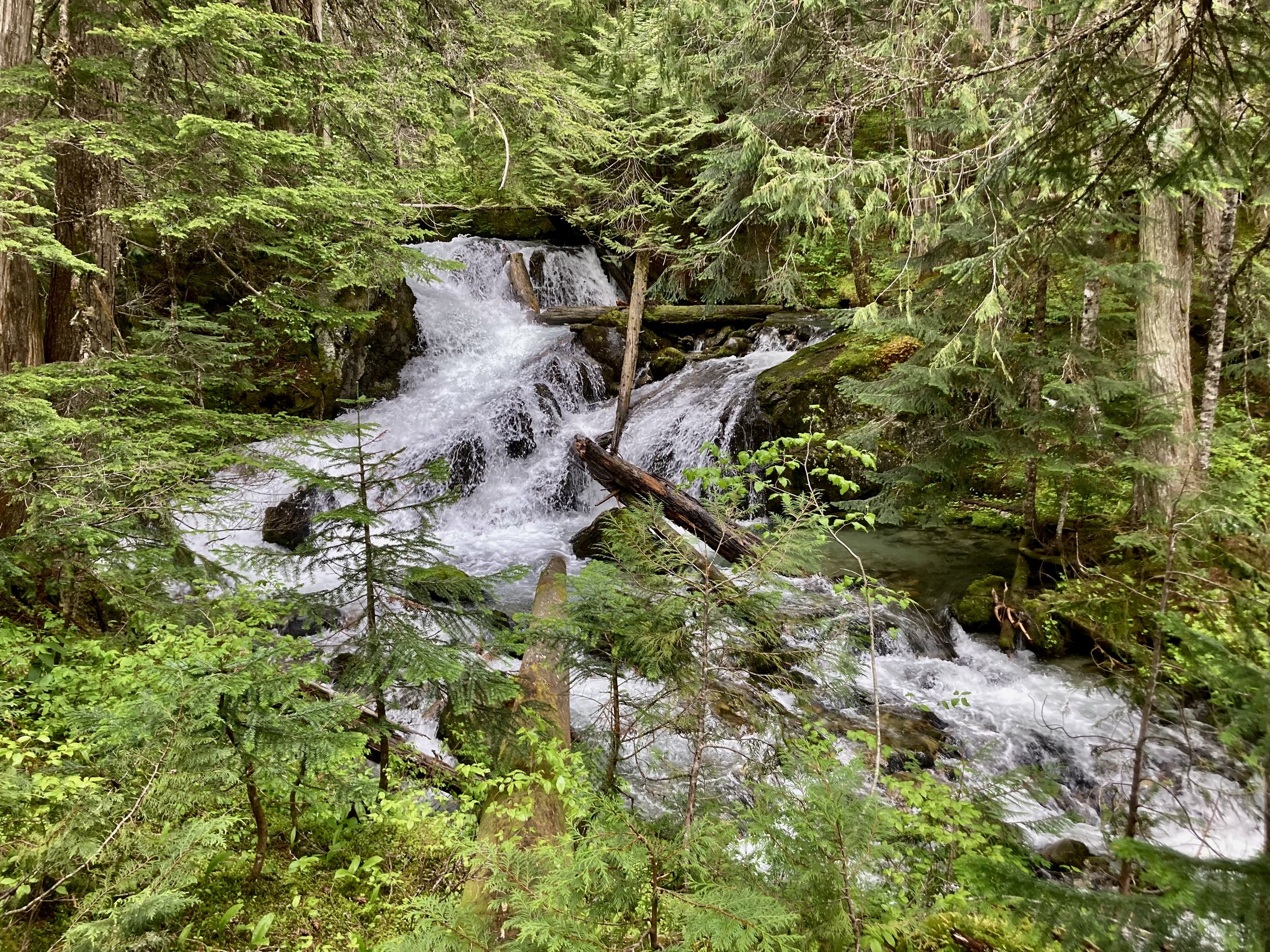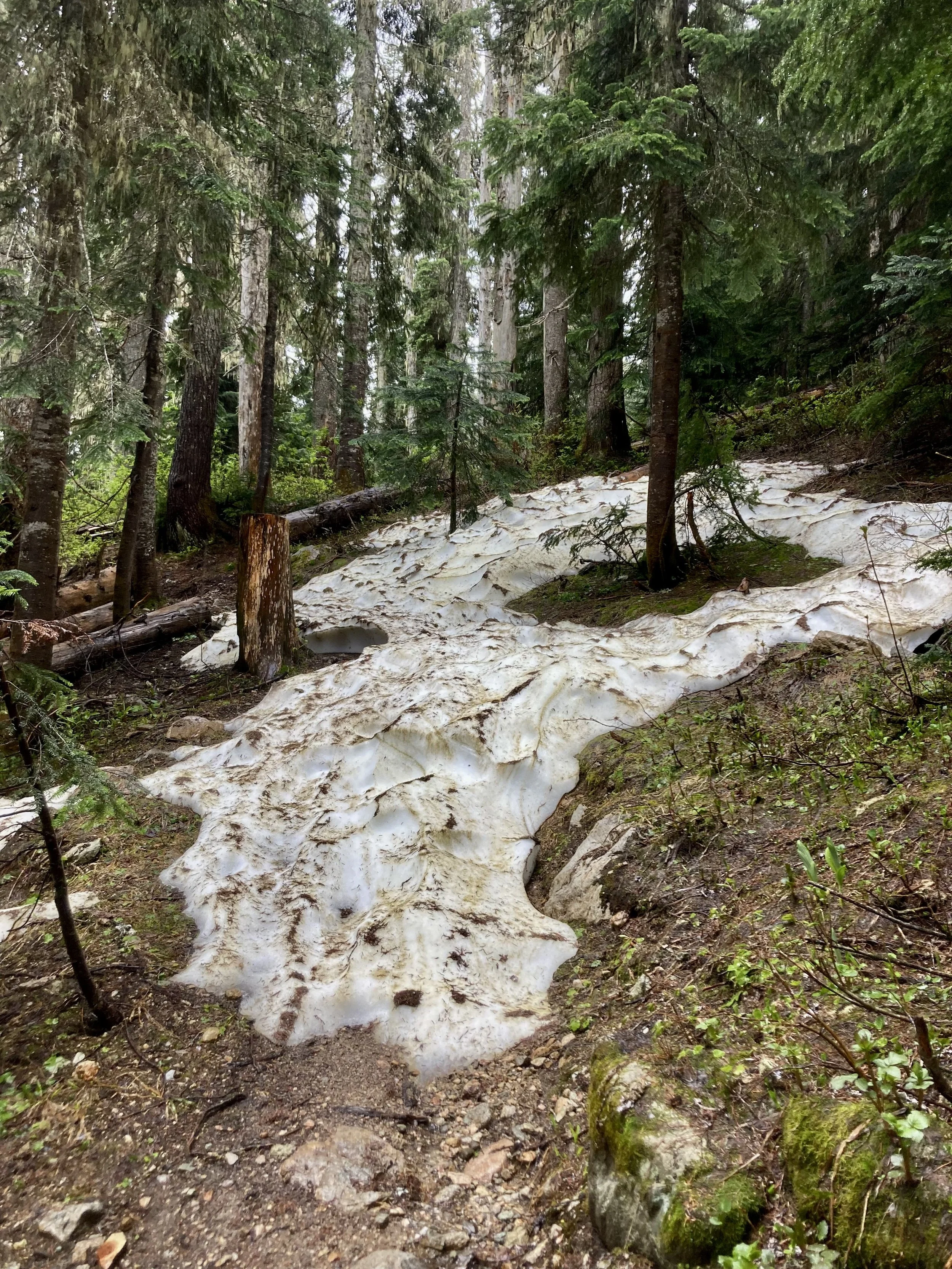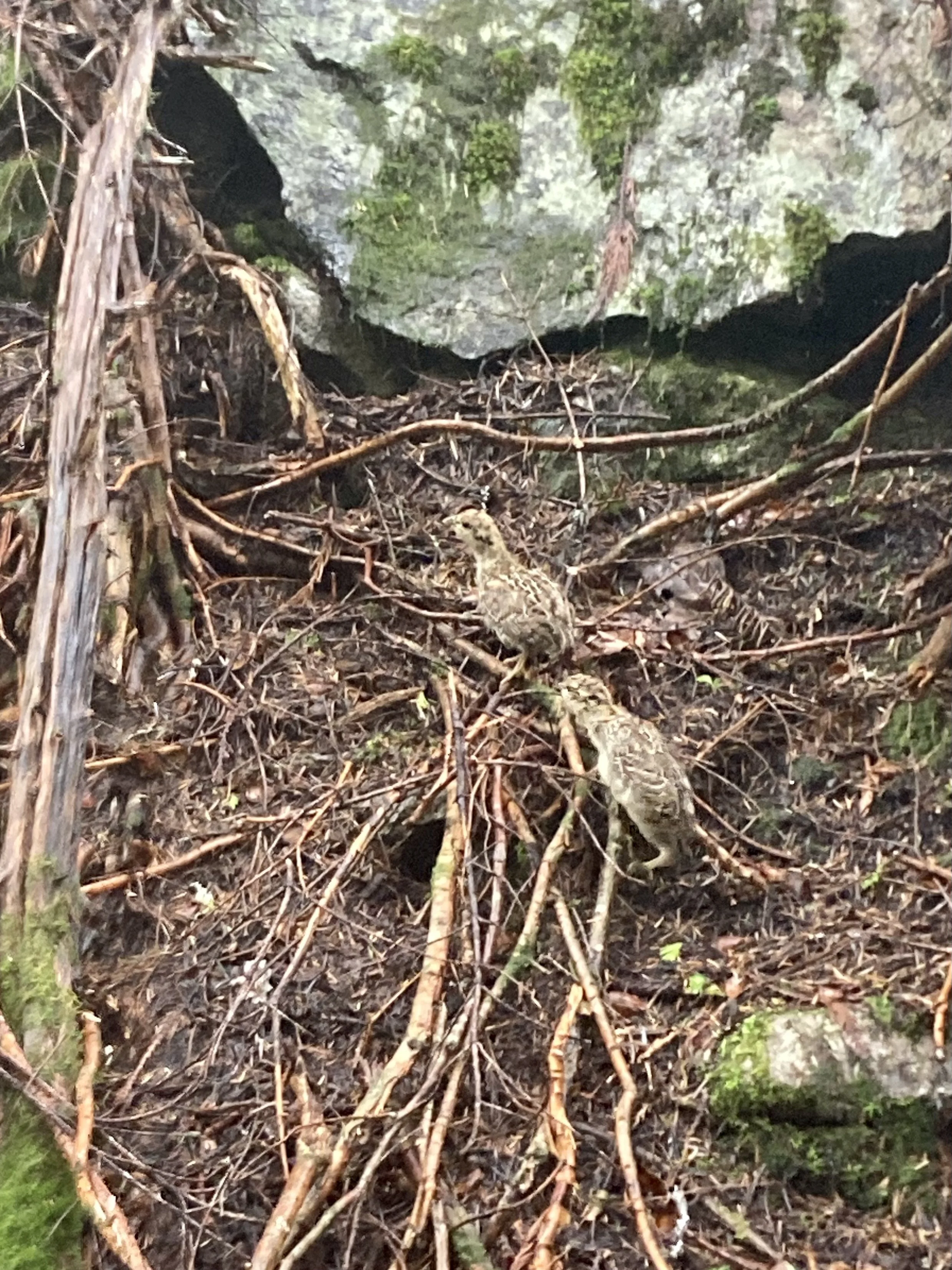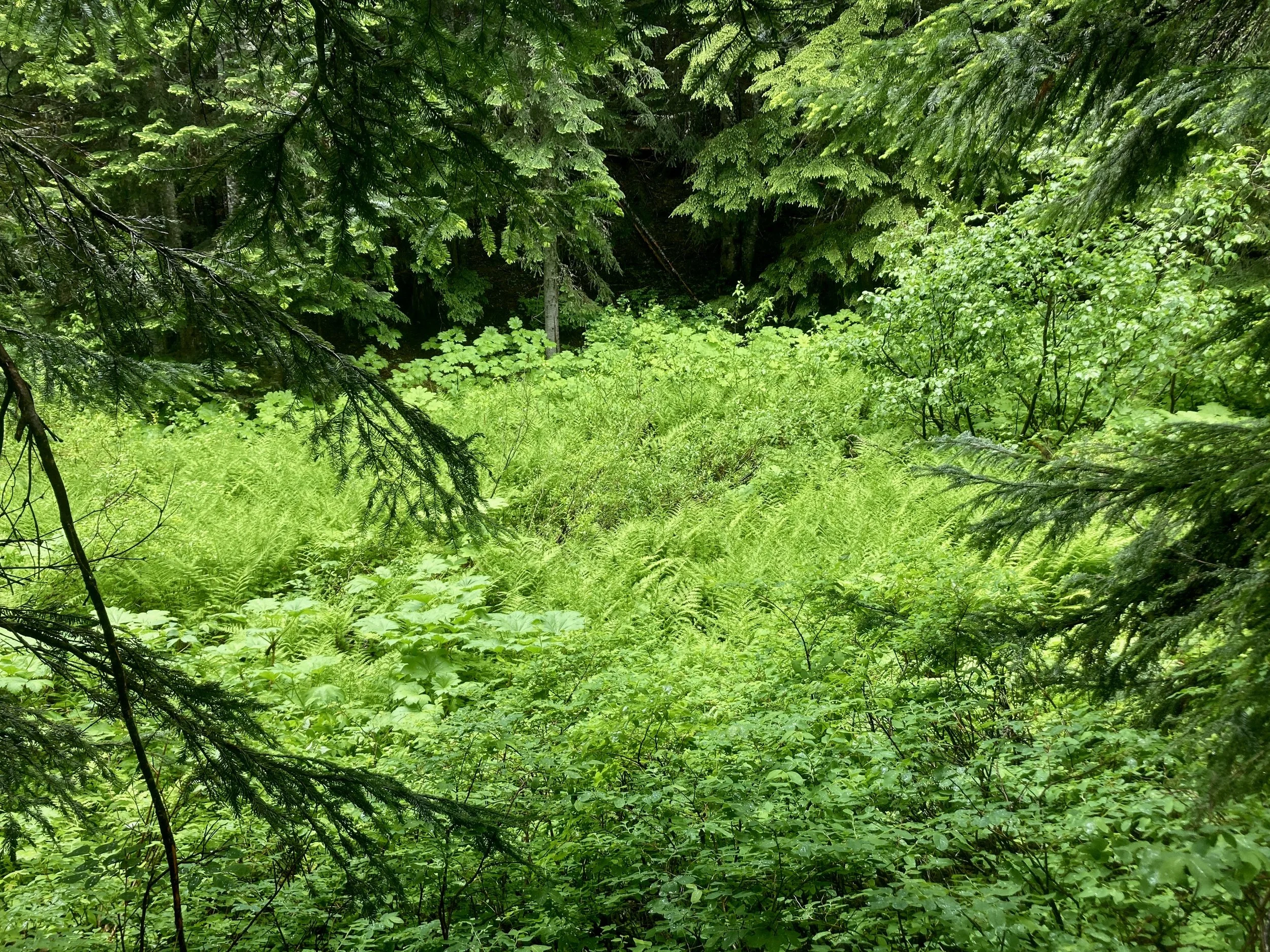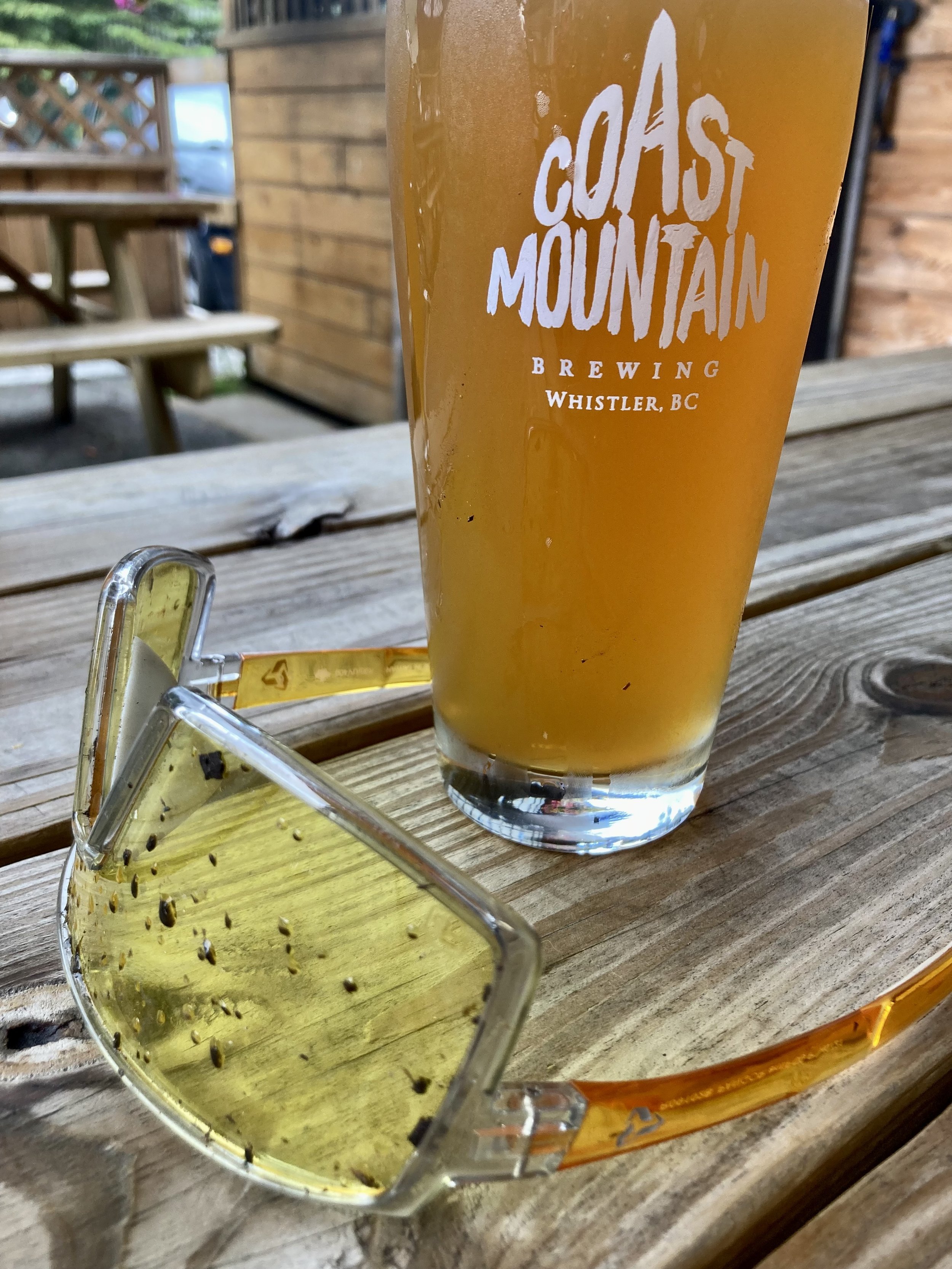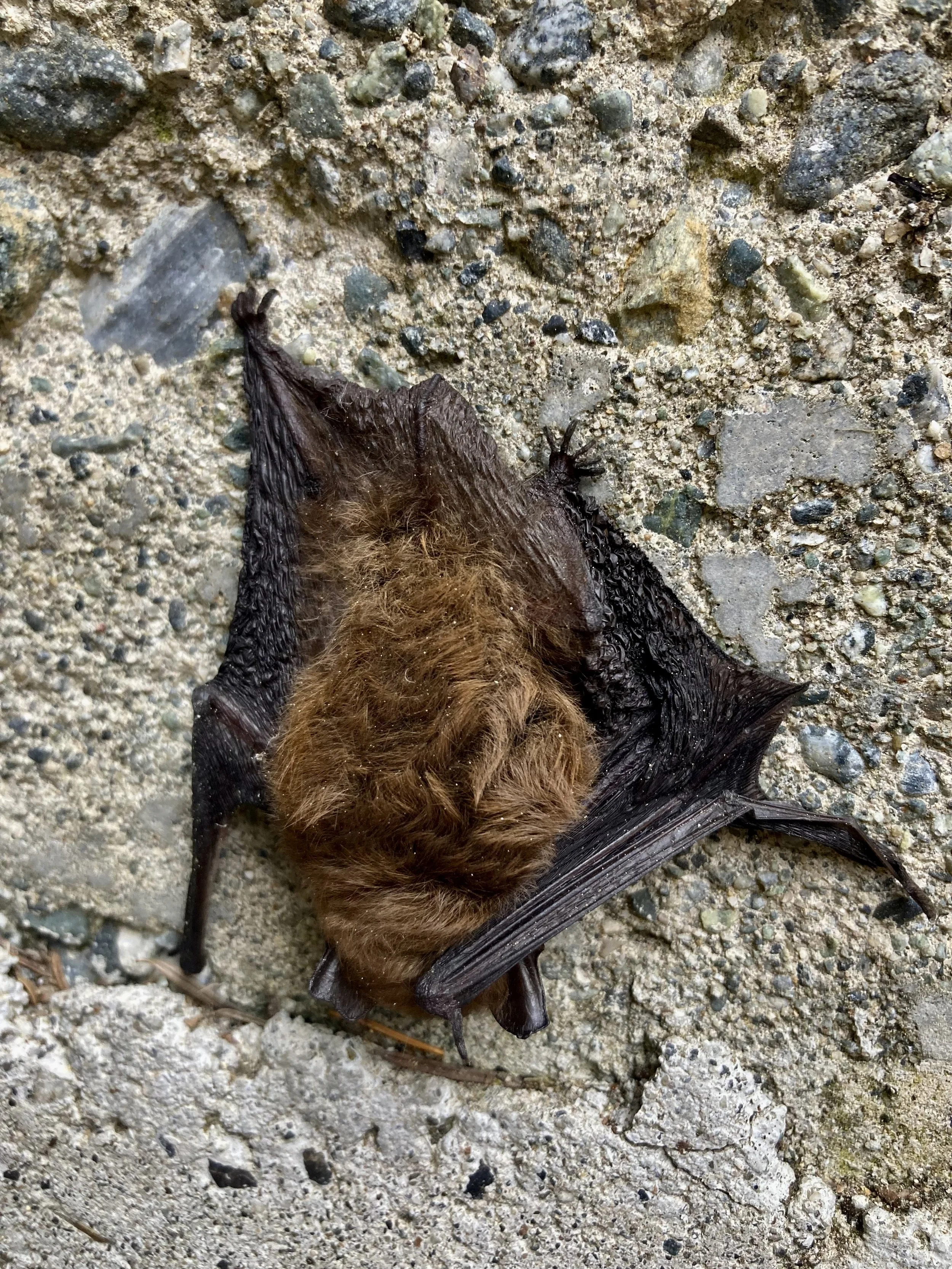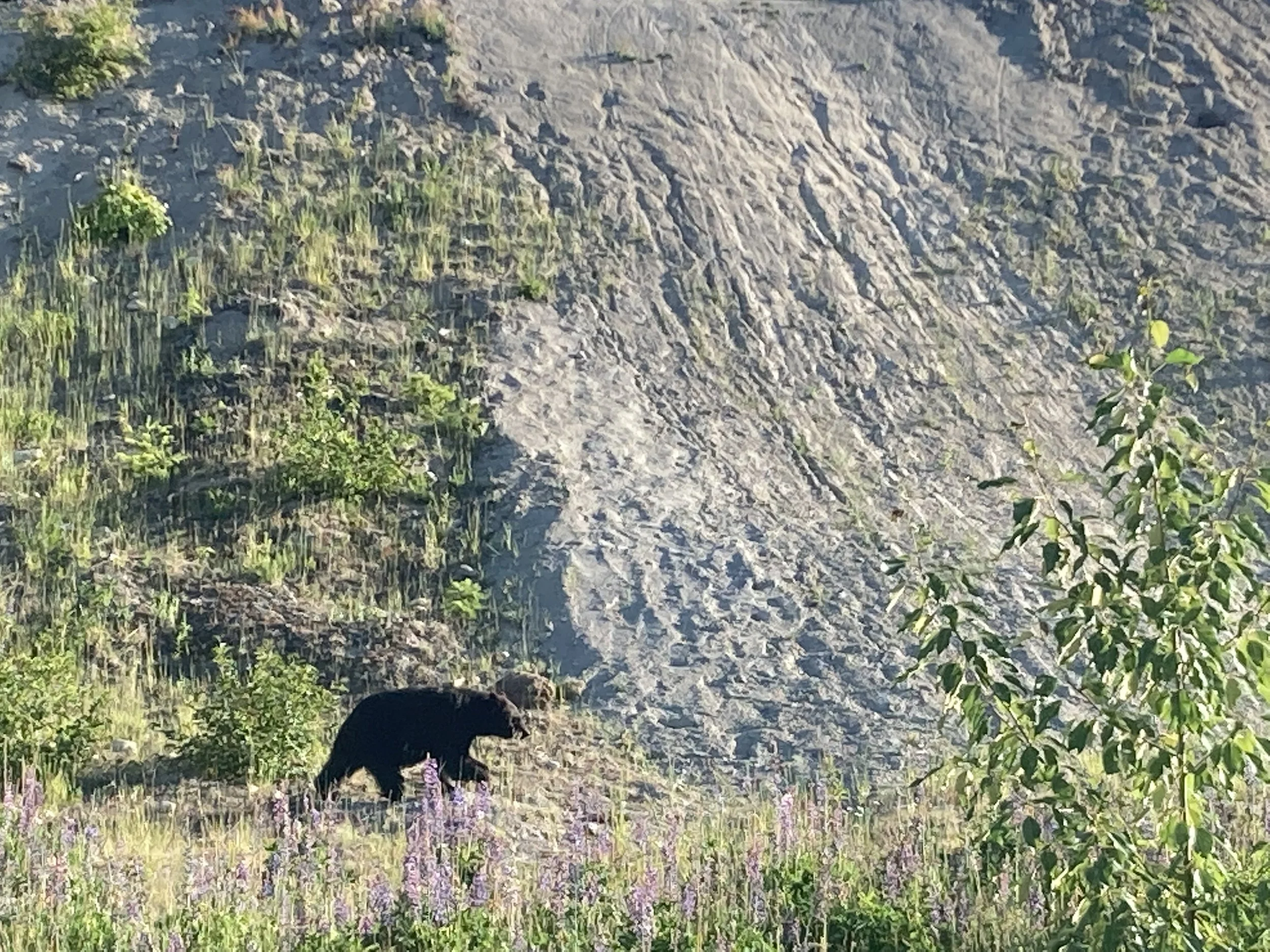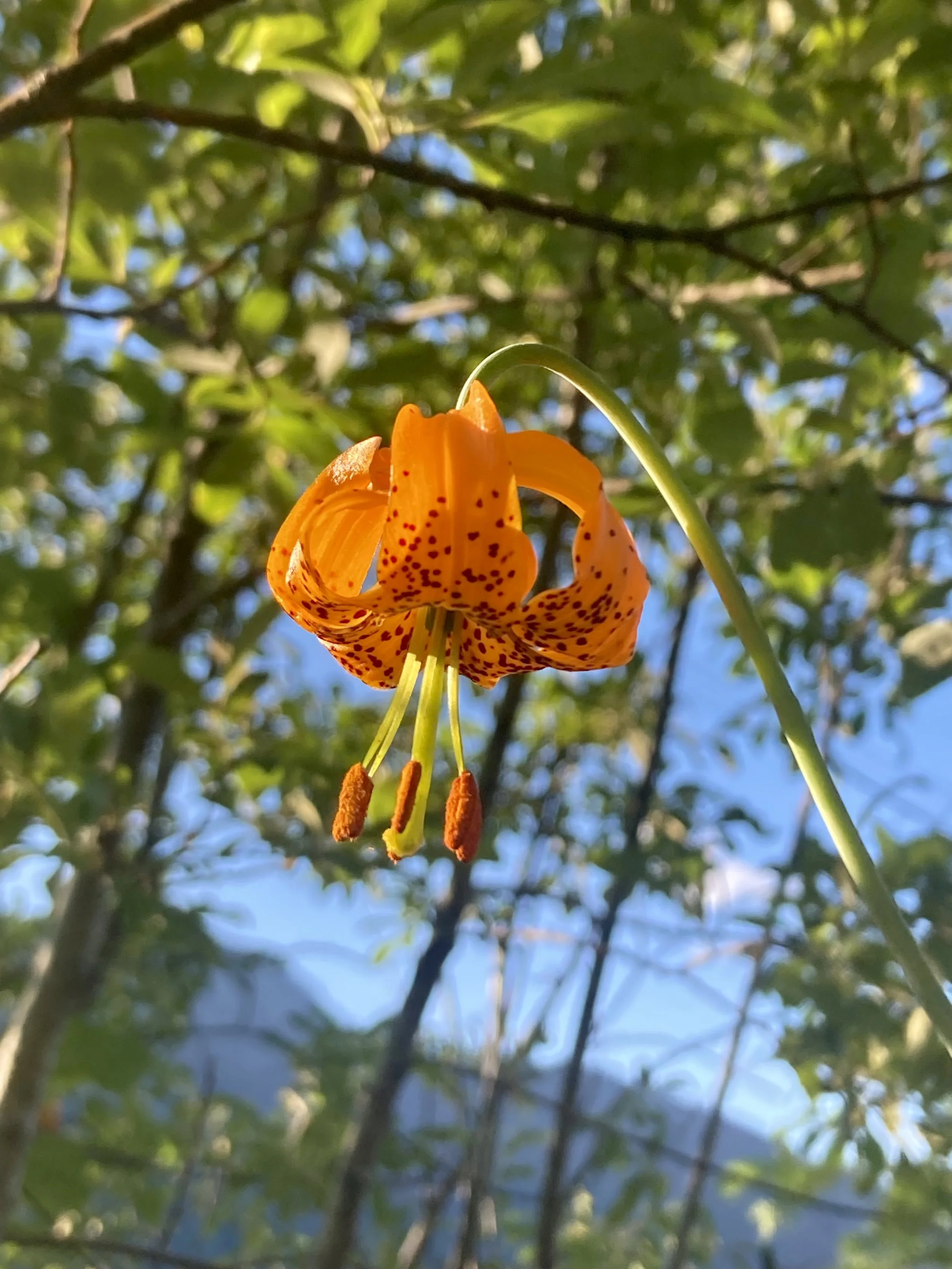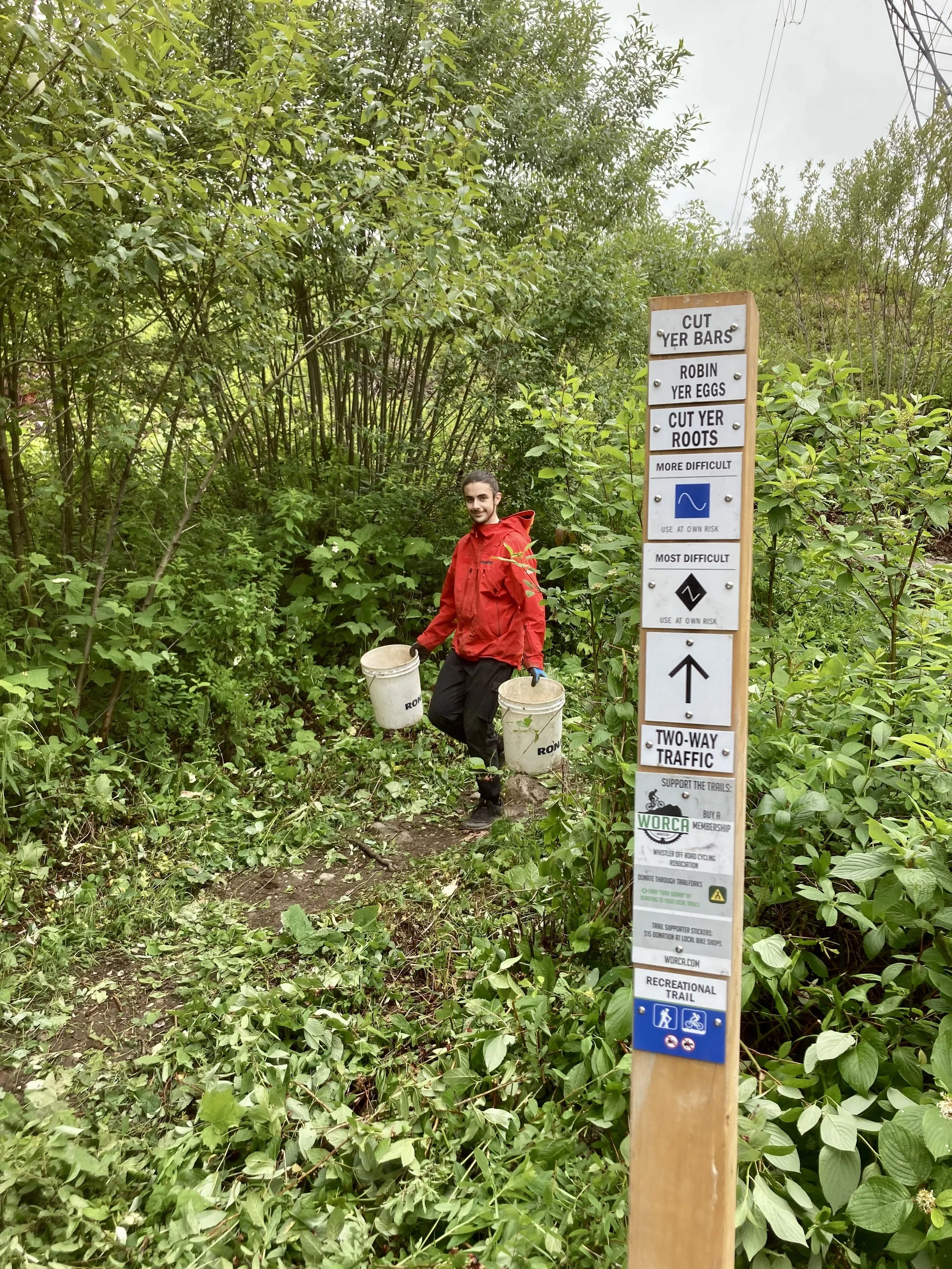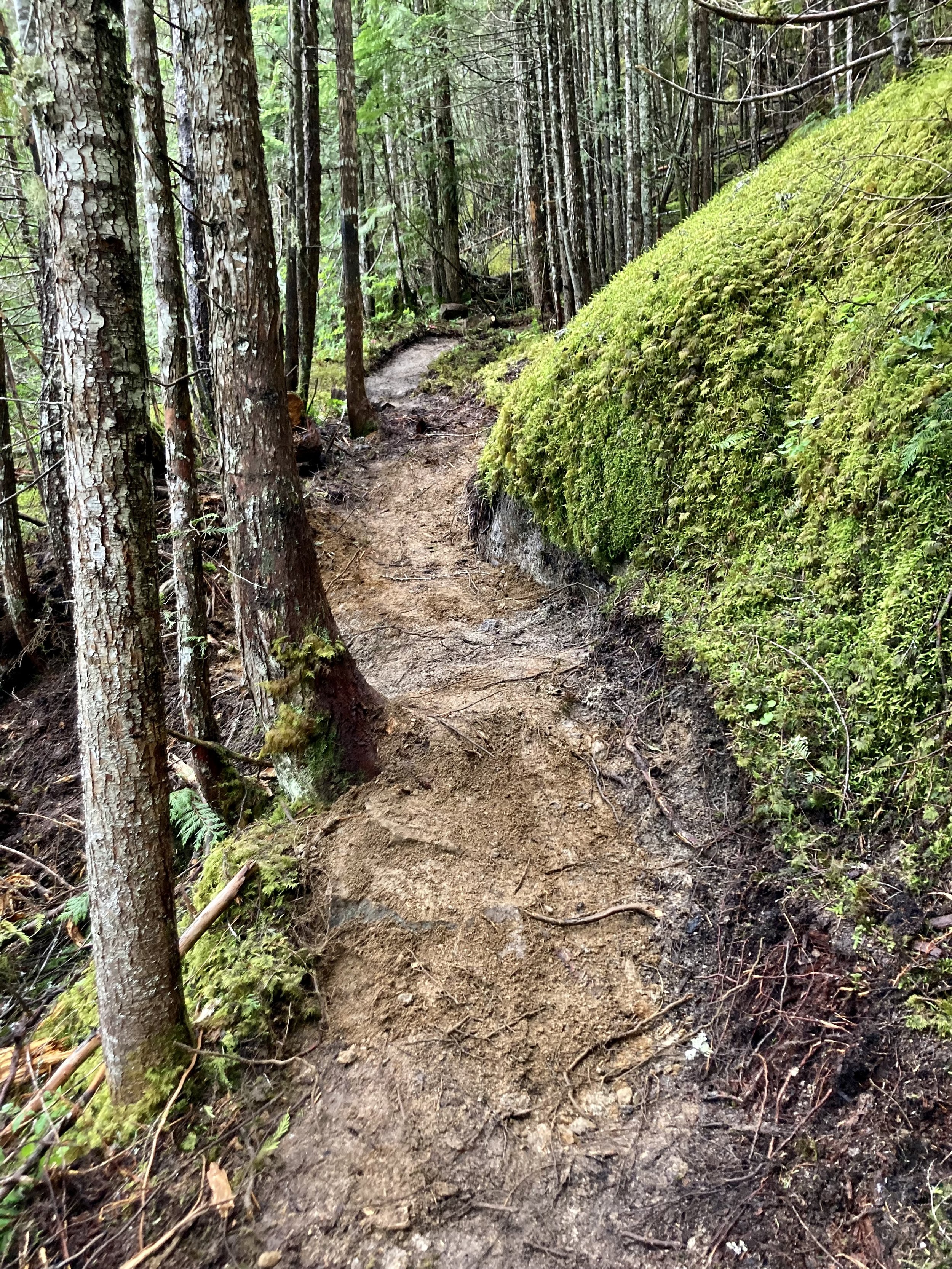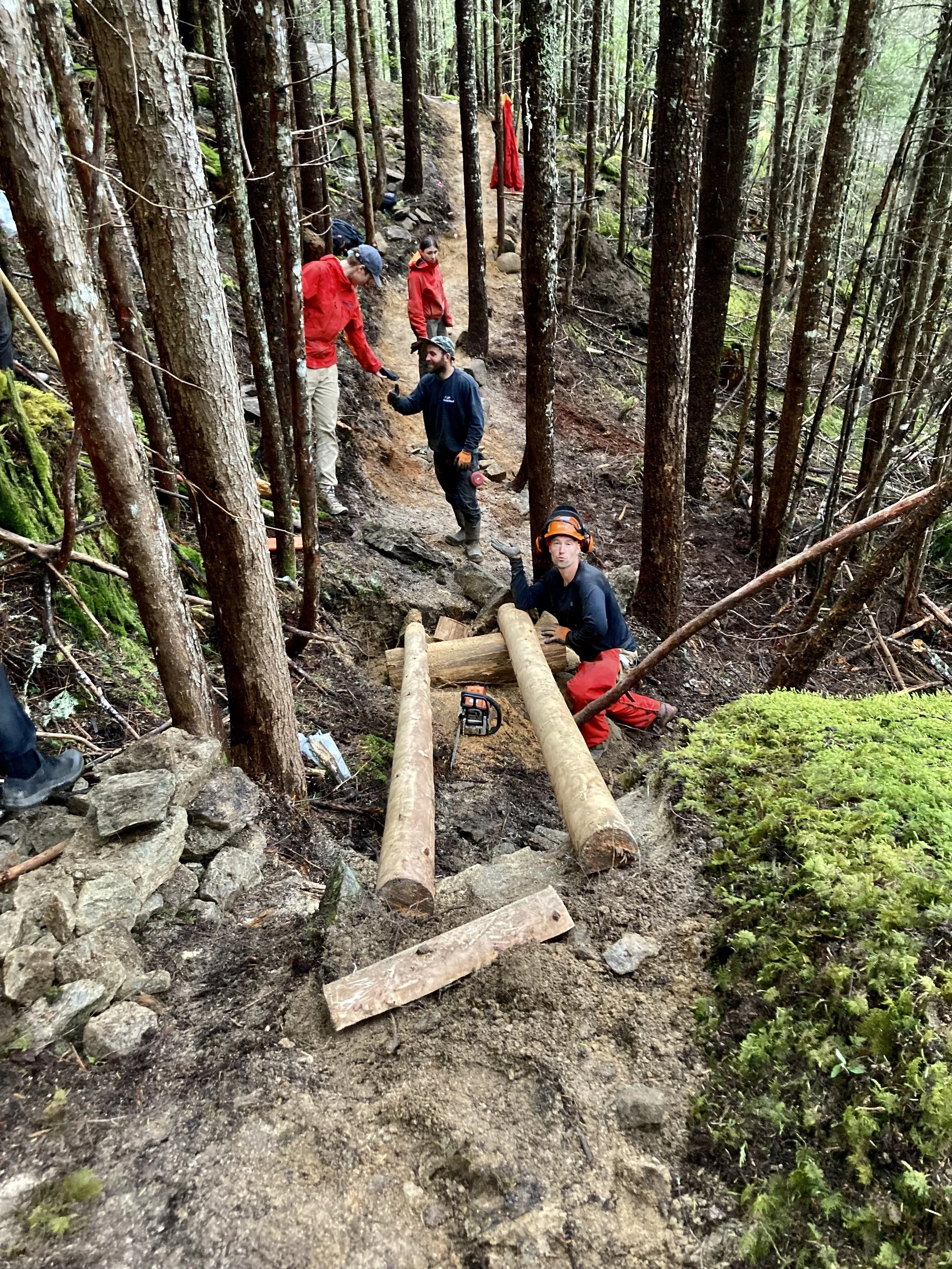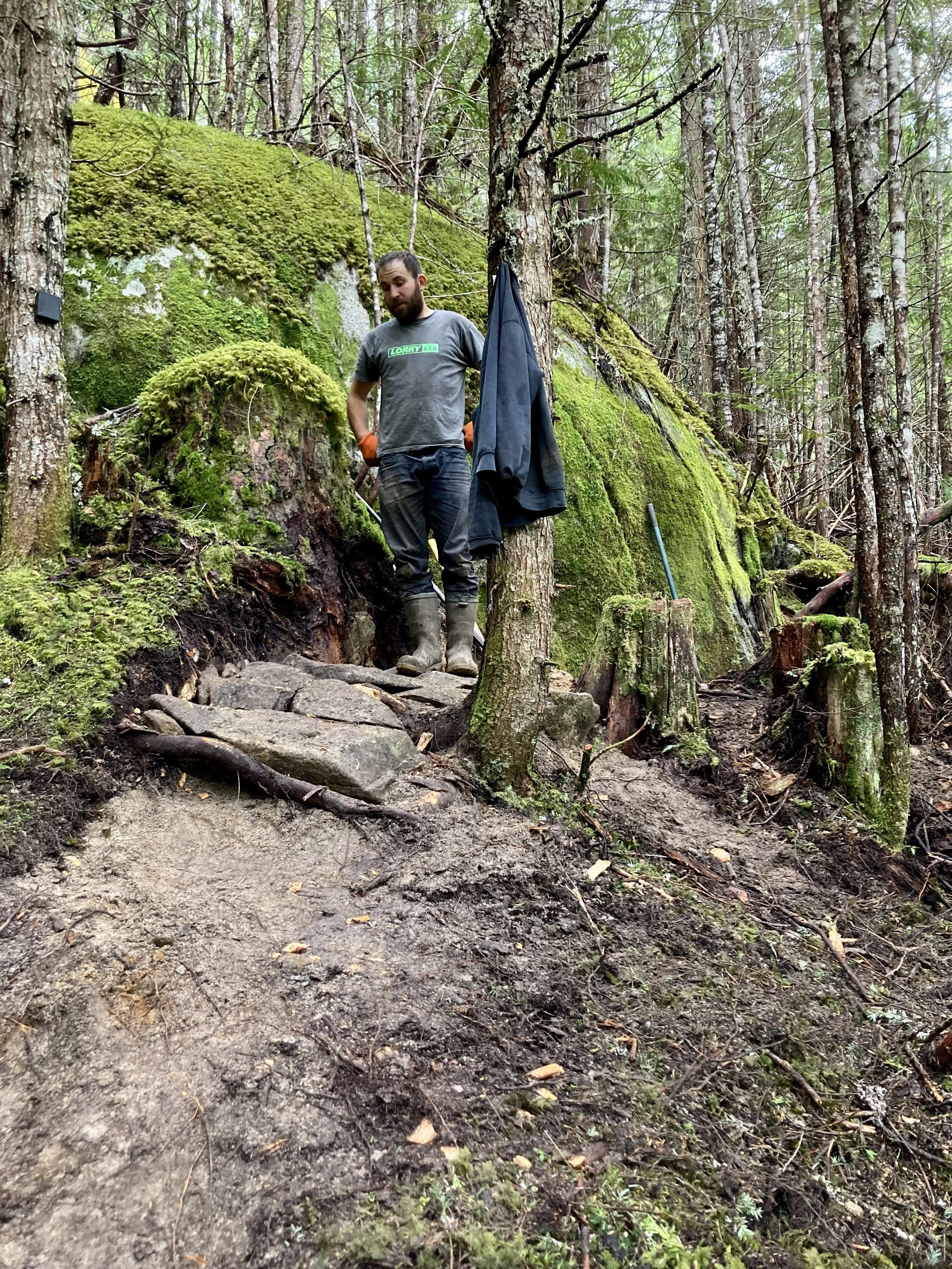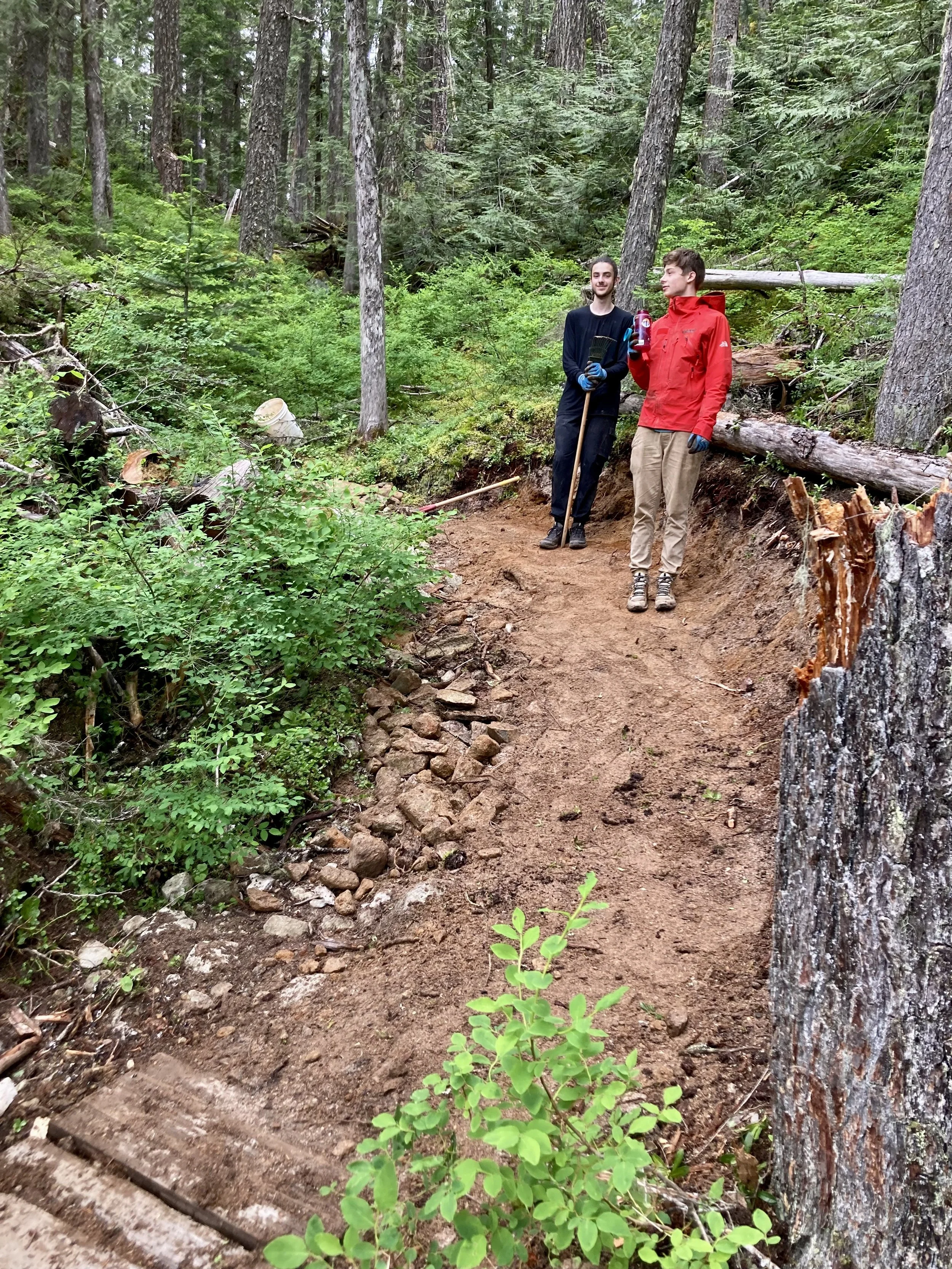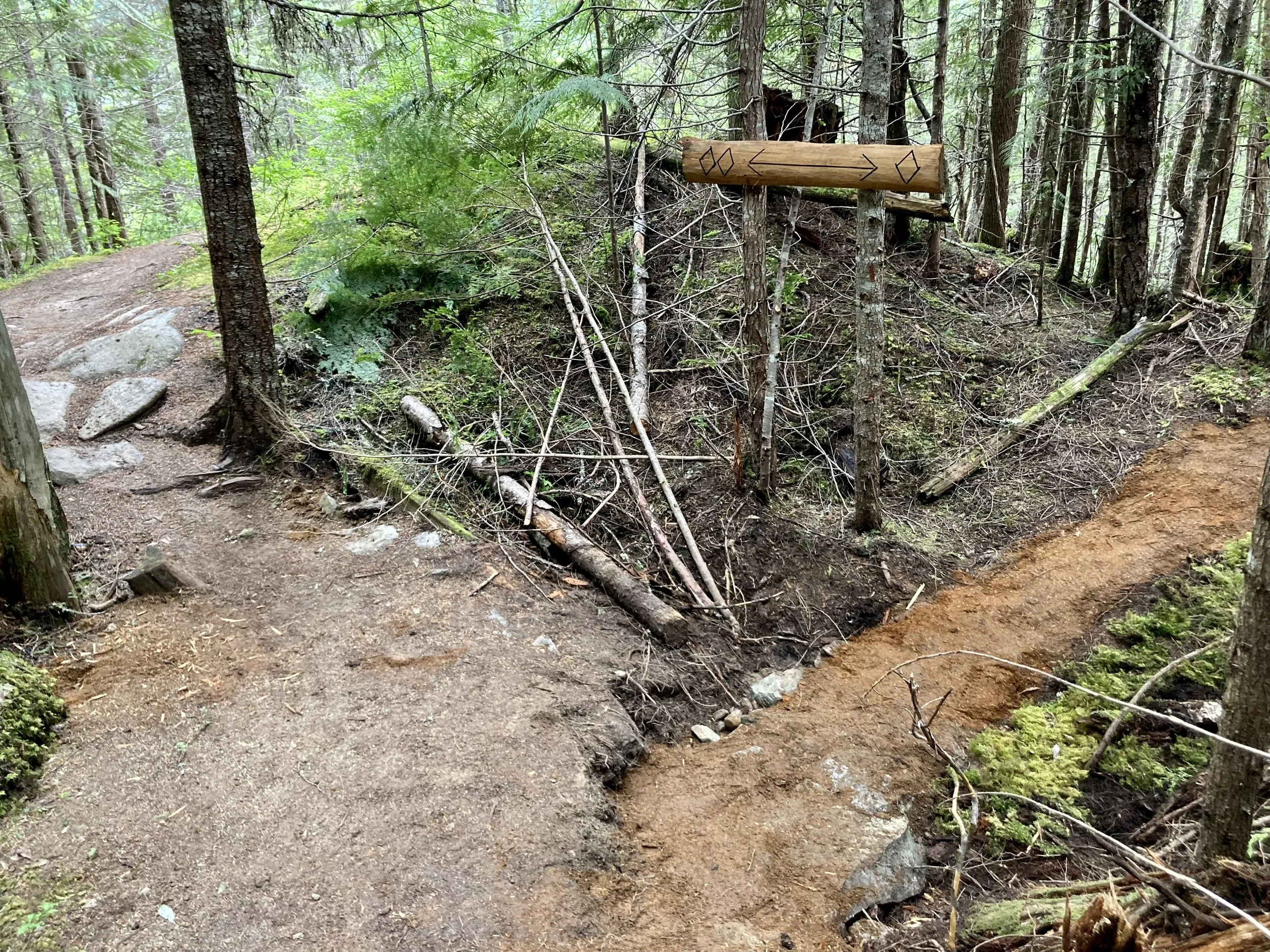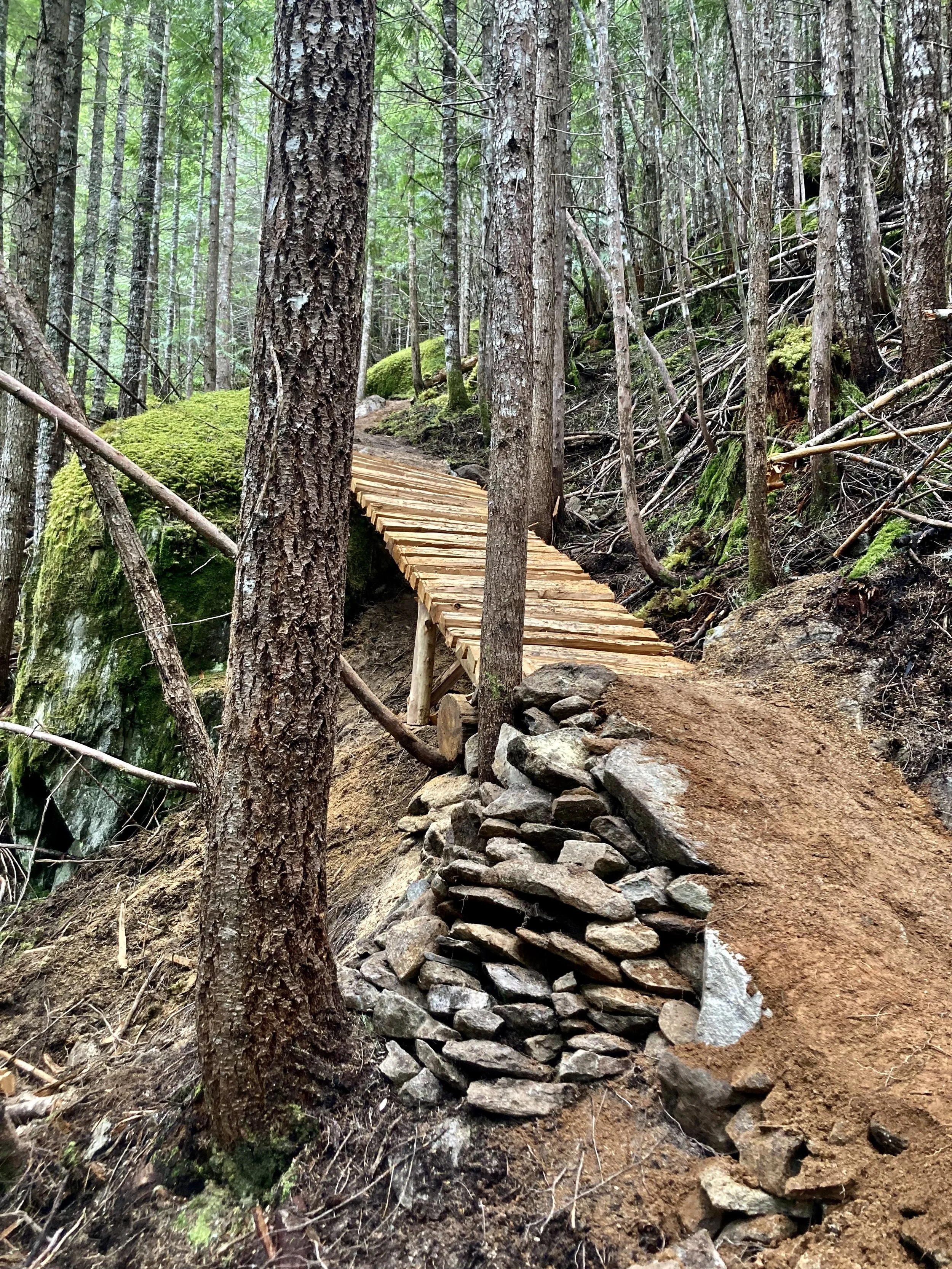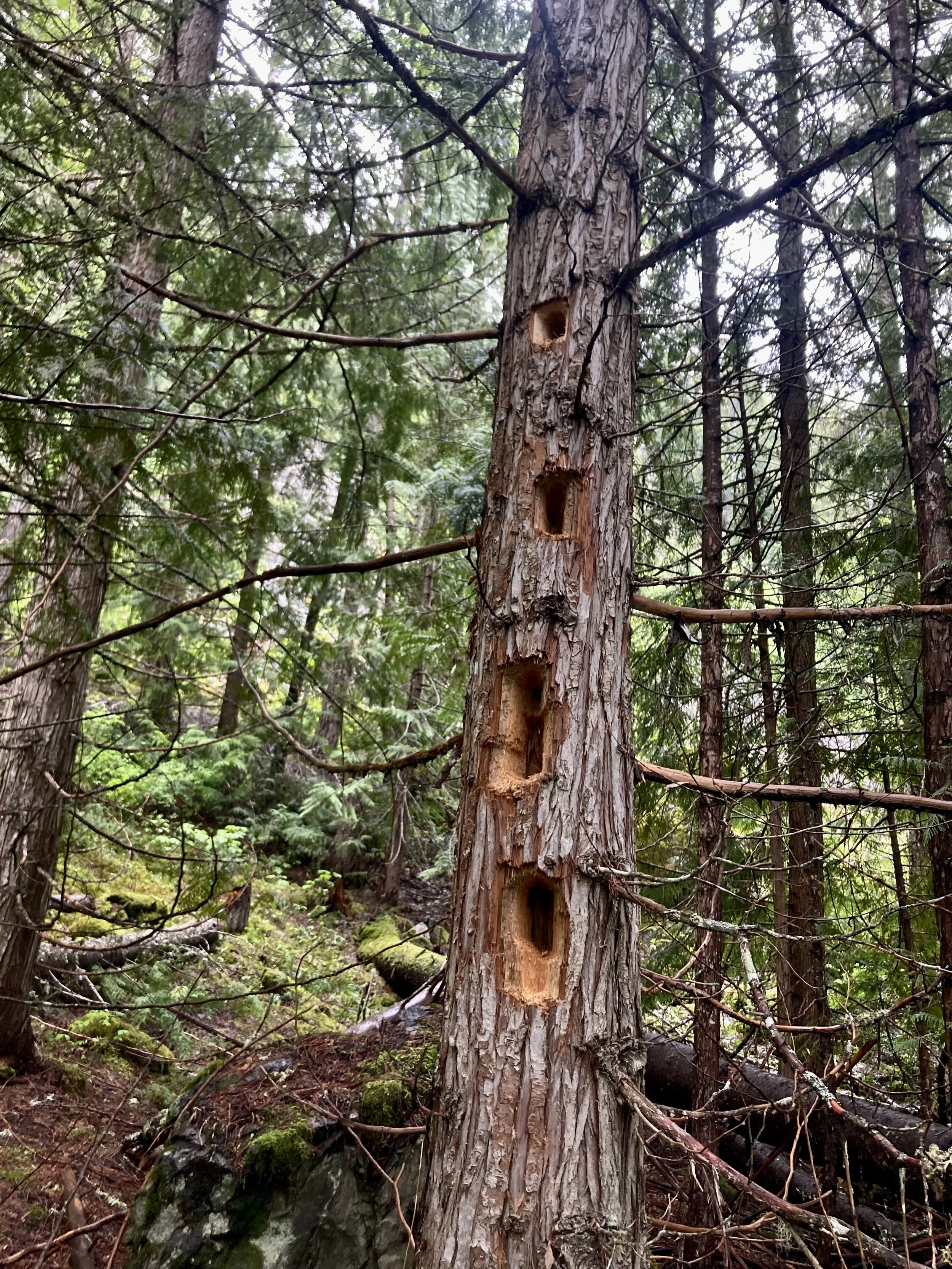Trails Update: July 7, 2022
Business hours are over.
As promised, the crew has completed what seemed like a drag of a renovation. I guess that’s what happens when you only spend 2 days/week on any particular project… We’ve completed a really nice bypass (a ride-around) to the slick, steep double bridge. Scott went searching for the new line after struggling to hike up the feature, which without a doubt is the crux of Business Time’s descent.
“That thing is definitely double black… on or off the bike.”
The line he found matches the rest of Duncan’s (and friends) vision: a series of short slabs and tight corners surrounded by mossy rolls.
We also rounded out a couple of turns further up before getting the tools out of there.
Yummy
It wasn’t “all hands on deck” in the south end of town. Benoit, Liam and Andreas have been armouring their way up Yummy Numby. The trail has been seeing a lot of traffic in all weather and many sections that we’d left untouched 3 years ago are now pretty rowdy.
“How do you decide what to repair?” asked a local rider.
We look for evidence of water damage like puddles, mud and erosion. Sometimes, it’s evidence of (popular) struggle like pedal strikes, root damage and trail creep (widening due to riders trying to avoid features).
It helps to know the history of the trail (What it looked/felt like in its earlier years) and its role in the network (popularity, access, etc…) to give it the right treatment. Sometimes we simply choke the trail to narrow the tread and guide riders to the desired line. Sometimes we’ll elevate the tread where erosion has created a channel. Another common repair involves protecting tree roots with strategically placed rocks.
Whoah! Check out that…
I believe that a trail can be both a thrill ride and a pathway to discovering natural wonders. Getting to the waterfalls, big trees and critters can awaken your curiosity and respect for our natural surroundings. The Whistler Naturalists are calling on those who play deep in the backcountry to help with a literal inventory of all the lifeforms we share the Sea to Sky region with. If you’re the kind of person that would notice a flying squirrel, wolf spider, stonecrop or sapsucker, your input will help researchers and conservationists safeguard biodiversity in our region. I like to use the Merlin app to help ID birds by their song (if I can’t get close enough for a picture) and use inaturalist to geotag and identify animals, plants, insects and fungi I come across. It’s a very educational tool! Last week I spotted 2 Pacific Wrens… I certainly won’t forget these cute birds’ distinctive song! Have fun “collecting”!
See you on the trails!
Dan Raymond
WORCA Lead Trail Builder

